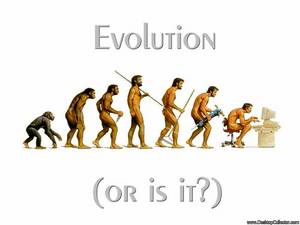Since 1980, many significant archaeological discoveries have been made. While it may be too early to know exactly how each of these discoveries will impact history archaeologists have no doubt they will. This is my list of the five most important archaeological discoveries made since 1980.
Neanderthal Genome
In 2007 a team of scientists from Leipzig discovered that Neanderthals inherited up to 4 percent of the same DNA as Homo Sapiens. The research team led genetic anthropologist Svante Pääbo, compared the DNA of modern people from Europe, Asia and Africa to the DNA of a Neanderthal. It was found that Neanderthals shared DNA with Homo Sapiens from both Asia and Europe but not Africa. The conclusion supports the theory that Neanderthals were interbreeding with modern humans in Asia and Europe but not in Africa.
The report was first published in the journal Science on May 7, 2010.
American Genes
It has long been assumed the first humans in North America were the Clovis people who arrived 12,000 years ago. It is now believed that the earliest humans to arrive in North America did so over 14,000 years ago. The evidence for the oldest North Americans is contained in a piece of preserved fecal matter found in an Oregon Cave. The DNA in the coprolites (a term for a preserved fecal matter) were tested and determined to be approximately 14,300 years.
Anglo-Saxon Hoard
In 2009 the largest amount of gold belonging to the Anglo-Saxons was found in Staffordshire, England. The discovery was made almost by accident when a man operating a metal detector found the gold in a farmer’s field. The hoard was placed in the field sometime during the ninth or tenth century when the Anglo-Saxons were fighting off vi king raiders. Since the discovery, archaeologists had learned much about Anglo-Saxon warfare since much of the hoard consisted of weapons.
Chimpanzee Tools
Archaeologists discovered a group of hammers used by chimpanzees about 4,300 years ago. Even though it is widely known that chimpanzees use tools the hammer discovery is the first chimpanzee archeological site. A discovery such as this not only helps scientist learn about chimpanzee behavior; it also teaches us about human behavior. According to Julio Mercader, the archeologist who made the discovery, humans and chimpanzees may have inherited tool use through a common ape ancestor who lived up to 14 million years ago.
Possible Jesus Tomb
In 1980 a tomb was discovered in Jerusalem that contained the remains of a Joseph, Mary, Jesus, the son of Joseph, Mariamne and Judah (son of Jesus). It has not been determined if the tomb belongs to the scriptural Jesus and his family and it probably never will be. Although this may not be the tomb of the scriptural Jesus it still is a very important discovery.
In 2007 a documentary directed by James Cameron called “The Lost Tomb of Jesus” put forward the hypothesis that the tomb did indeed belong to Jesus Christ. Since the documentary was released a panel of leading archeologist met in Jerusalem in order to come to a conclusion regarding the tomb. The meeting resulted in no conclusion among archeologists primarily because much of the evidence had disappeared since the tomb was opened.

